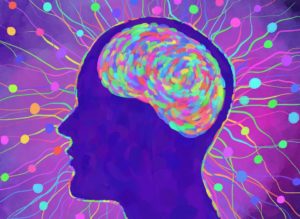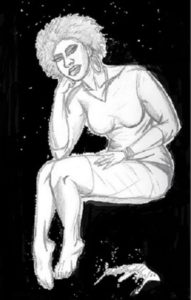“When I get a little money, I buy books; if any is left, I buy food and clothes.”
 I felt it in my soul the first time I read Desiderius Erasmus’ gem about blowing his cash on books before bothering with trivial matters like food and threads. Talk about a kindred spirit!
I felt it in my soul the first time I read Desiderius Erasmus’ gem about blowing his cash on books before bothering with trivial matters like food and threads. Talk about a kindred spirit!
Over the years, I’ve amassed a book collection that could rival a miniature Reading Room at the Library of Congress. My home has become a sanctuary for the written word, with books finding cozy nooks in every nook and cranny.
Despite my efforts to keep every literary companion, space constraints have forced me to part ways with hundreds of my beloved volumes. It’s a bittersweet process, like saying goodbye to old friends. But fear not, for many remain scattered throughout my humble abode.
In my bookcases, they stand at attention like loyal soldiers, rows upon rows of literary treasures. Some have found refuge on closet shelves. My headboard bookshelves harbor my nighttime companions, always within arm’s reach for those late-night reading sessions. My Kindle has become a portable library, holding countless digital books that don’t take up any physical space. And let’s not overlook the audiobooks, those storytelling genies that whisper tales into my ears.
One day, I was chatting with a buddy about a book we both started, and I casually mentioned that I was halfway through “reading” it. Suddenly, my friend jumps in with a correction. “Hold up!” she says, “You’re not reading – you told me you were listening to the audiobook. That’s totally different!” This friendly exchange highlights a hot topic in the literary world: Does listening to an audiobook count as reading? Some folks insist it’s a different ballgame, while others argue it’s just another way to consume the material.
While she’s technically correct in distinguishing the two methods of information consumption, I argued that the term reading could be used interchangeably relevant to an audiobook. So went our debate about the nature of comprehension and information retention in the digital age. We even delved into the cognitive processes involved in traditional reading and audiobook listening, exploring how each method engages different brain parts while ultimately achieving the same goal: absorbing and understanding the content.
That’s right. We were diving into the age-old (okay, maybe not that old) debate of whether consuming audiobooks counts as reading. It’s a topic hotter than splattering bacon grease. (Some folks take what should be a matter of simple semantics as serious as a third-degree burn.)
Let’s break it down to elementary arithmetic:
Reading: Eyes + Book = Brain absorbing words
Listening: Ears + Audiobook = Brain absorbing words
As simple as one plus one equals two. Right?
Not adding up? Okay, I understand. Some folks are a bit slower than others. Picture this: You’re perched at your kitchen table, nose buried deep in a riveting hardcover. Your brain is fired up by expresso, and your eyeballs are bouncing from word to word and zipping through paragraphs faster than you can say caffeine overdose.
Meanwhile, your neighbor is outside jogging through the neighborhood and listening to the same story as an audiobook. Two very different scenes, but guess what? Although the information is obtained through various processes, both methods accomplish the same goal. You and your neighbor are absorbing the content in different ways.
I find it simpler to use “read” for both procedures. Life’s too short to get hung up on the nitty-gritty details of how you consumed a book. It’s like saying something is supercalifragilisticexpialidocious when you can easily say, “That’s fantastic!”
Remember VP Kamala Harris, early in her campaign, telling her numerous supporters to get out there, knock on doors, raise funds, work hard to make things happen, and do something to help me win this election? After a while, she cut to the chase and said, “You know the assignment.”
I want to mention one experience in conjunction with the great debate between paper and audio. An intriguing phenomenon sometimes occurs when I listen to audiobooks at bedtime. Sometimes, the soothing voice of the narrator lulls me to a sound sleep. Other times, as I drift off with my earbuds in place, the narrative seeps into my dreams, creating surreal experiences.
One night, recently, I was listening to Ta-Nehisi Coates’ “The Message” when I encountered a vivid example of this peculiar occurrence. In the book, Coates describes his visit to Goree Island in Senegal and his emotional experience at the infamous “Door of No Return” in the House of Slaves. Suddenly, I was transported to that location in a brief but intense dream sequence. I was in chains on Goree Island, desperately struggling against an invisible force attempting to drag me through The Door. Even in my unconscious state, I knew what was happening and what could be the outcome. As I struggled against the chains, I began screaming, “Oh, Deet!” (English translation – “Oh, hell no!”) The visceral nature of this dream jolted me awake, leaving such a lasting impression of the book’s emotional impact that I can’t forget it. Over the years, I’ve had similar experiences with other audiobooks.
Although most of the audiobooks I’ve bought have excellent narrators, the voices of some readers were downright annoying. Some had a nasal twang; others had a rail squeal that reminded me of a speeding train, and some were just gravelly. On those occasions, I often did not make it through the first chapter and never finished the book.
Once, while I was still in the workforce, I interviewed for a position advertising for a Reader at Columbia Lighthouse for the Blind. During the interview, I was handed a sheet of paper and asked to read some of the text. Since I had been a telephone operator in the private sector and as a civilian working for the Department of the Army, I knew I had a pleasant voice with pitch, tone, and diction and read the copy proficiently. Nevertheless, I didn’t get the job. I never learned why not.
That happened so long ago that I had nearly forgotten it until I began writing this post. Had I gotten the job, who knows where it may have led? Fast-forward to the future. I might have become an audiobook narrator. Narrators make pretty good money, often receiving between $100 and $350 per finished hour. They can also receive a royalty share of a few hundred dollars per sale.
So, dear readers (or should I say, dear consumers of written content in various formats), what’s your take on this literary kerfuffle (Judge Judy enjoys using that word.)? Are you Team Read, Team Listen, or Team Who-Cares-As-Long-As-You-Enjoy-The-Book? Feel free to share your thoughts in the comments below!




